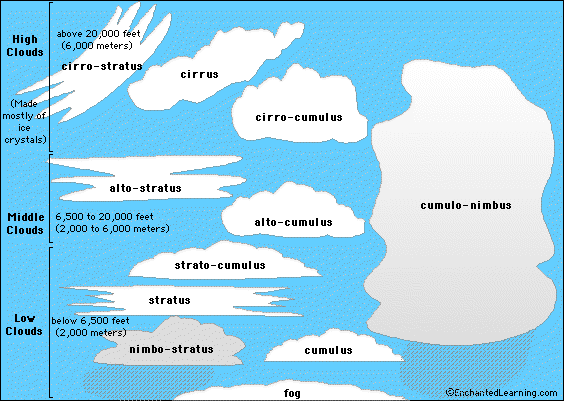
LESSON 2:
TYPES OF CLOUDS
INTRODUCTION |
LESSON 1 |
LESSON 2 |
LESSON 3 |
Luke Howard's three basic cloud categories:
1. Stratus - layered. (Latin - "stretched out").
2. Cumulus - large heaps. (Latin - "heap" or "pile").
3. Cirrus - feathery. (Latin - "curl" or "tuft").

1. High clouds – bases are an average of 20,000 feet above the earth.
Cirrus – form 26,000 to 42,000 feet above the earth.
Cirrocumulus – form 20,000 to 25,000 feet above the earth.
Cirrostratus – also form at 20,000 to 25,000 feet above the earth.
2. Vertical clouds – can form at almost any altitude and are created by strong vertical air currents.
Cumulus – puffy, and can look similar to white cotton balls.
Cumulonimbus– bases (thunderheads) almost touch the ground; tops may be 75,000 feet tall.
3. Low clouds – generally occur less than 6,500 feet above earth's surface.
Stratus – base is close to the ground, sometimes within only a few meters. Usually less than 3,200 feet thick, they may be wide enough to cover two states.
Nimbostratus – cause rain, appear darker than other stratus clouds.
To view photographs of types of clouds press on the following button:
Click here to go to Quiz 2.